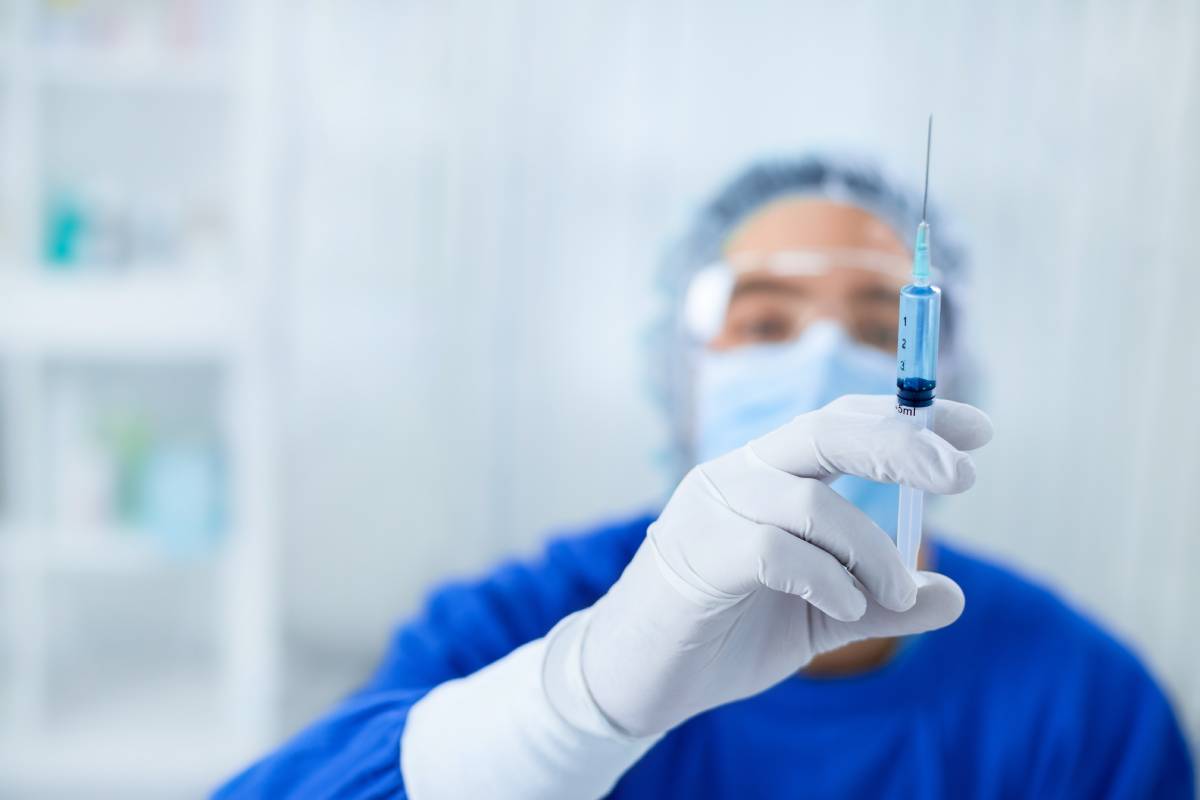Intravenous and Inhalational Anesthetics on the Immune System

General anesthesia is administered during surgery for analgesic purposes; these can be delivered using inhalational anesthetics, intravenous medications, or a combination of both. Both intravenous and inhalational anesthetics have been found to modulate the immune system, the body’s strongest line of defense against pathogens and disease [1].
Intravenous anesthetics such as propofol or benzodiazepines appear to have inhibiting effects on innate immunity. Their inhibitory effects on neutrophils and macrophages, important immune system cells, may be related to the lipid carrier vehicle of intravenous anesthetics, which allows insoluble lipids to travel through the blood or cytoplasm [2]. In vitro, propofol was shown to dose-dependently impair neutrophil phagocytosis of harmful bacteria including E. coli and S. aureus. This is believed to be caused by a reduction in the intracellular calcium concentration of neutrophil cells [3]. Another study suggests the inhibitory effects of propofol on neutrophil functions occur through the inhibited phosphorylation of neutrophil intracellular signaling molecules such as p43 MAPK [2]. Propofol has also been shown to impair monocyte and macrophage functions. An in vitro study demonstrates exposure of murine macrophages to low concentrations (3-30 μm) of propofol has no effect on cell viability. However, at high concentrations (300 μm), propofol caused arrest of the cell cycle in G1/S phase, the transition between cell growth and DNA replication, resulting in cell death [4].
In addition to this, concerns have recently arisen surrounding the consequences of oversedation with intravenous anesthetics. Slow metabolism and clearance may result in delayed awakening times, increased duration of mechanical ventilation, and hemodynamic instability, which in extreme cases could prove fatal [5]. Prolonged use of benzodiazepines and propofol may also promote drug tolerance, withdrawal symptoms, and long-term neuropsychiatric disorders. Modern-day inhalational anesthetics are preferred in some cases; these agents have a rapid onset of action, no significant active metabolites, and no concerns of tachyphylaxis, or drug tolerance [5]. Inhalational anesthetics have different effects on the immune system compared to intravenous agents.
In the immune system, common inhalational anesthetics can reduce reactive oxygen species (ROS) production by neutrophils. ROS are highly reactive chemicals that can cause DNA breakage and promote carcinogenesis. However, in the immune system, ROS are incredibly important; these molecules damage foreign biomolecules by oxidizing iron-sulfur clusters in unrecognized enzymes. Released iron creates hydroxyl radicals to damage pathogens, making ROS essential for phagocytosis [6]. On the other hand, the inhibition of ROS production by neutrophils may exert protective effects on ischemia-reperfusion injury, which is defined as the paradoxical exacerbation of cellular dysfunction and death. Additionally, when exposed to inhalational anesthetics such as sevoflurane, isoflurane, and halothane, neutrophils lose their adhesive qualities, which is often a precursor for a significant decrease in cardiac function [1,7]. This is believed to be caused by the inhibitory effect the drugs in cardiac tissue have on ROS, which not only contribute to the development of reperfusion injury but also induce peri-oxidation of the lipid membrane, altering the structural integrity of a cell’s outermost defense [7]. In a murine model, isoflurane has been shown to reduce the release of proinflammatory cytokines, including tumor necrosis factor (TNF-α) and interleukin-1β [8]. Similarly, sevoflurane attenuated the systemic inflammatory response induced by cardiopulmonary bypass surgery; it reduced the release of cytokines such as interleukin-6, interleukin-8, and interleukin-10 [9].
Anesthetic agents are foreign substances, and therefore, will almost always have some impact on the immune system, but research is beginning to show the effects of inhalational anesthetics may be less damaging than those of intravenous anesthetics. More research on this topic could help elucidate the most effective anesthetic regimen in the clinical setting.
References
- Stollings, L. M., Jia, L.-J., Tang, P., Dou, H., Lu, B., & Xu, Y. (2016). Immune modulation by volatile anesthetics. Anesthesiology, 125(2), 399–411. https://doi.org/10.1097/ALN.0000000000001195
- Kurosawa, S., & Kato, M. (2008). Anesthetics, immune cells, and immune responses. Journal of Anesthesia, 22(3), 263–277. https://doi.org/10.1007/s00540-008-0626-2
- Mikawa, K., Akamatsu, H., Nishina, K., Shiga, M., Maekawa, N., Obara, H., & Niwa, Y. (1998). Propofol inhibits human neutrophil functions. Anesthesia & Analgesia, 87(3), 695–700. https://doi.org/10.1213/00000539-199809000-00039
- Chen, R.-M., Wu, C.-H., Chang, H.-C., Wu, G.-J., Lin, Y.-L., Sheu, J.-R., & Chen, T.-L. (2003). Propofol suppresses macrophage functions and modulates mitochondrial membrane potential and cellular adenosine triphosphate synthesis. Anesthesiology, 98(5), 1178–1185. https://doi.org/10.1097/00000542-200305000-00021
- Jerath, A., Parotto, M., Wasowicz, M., & Ferguson, N. D. (2016). Volatile anesthetics. Is a new player emerging in critical care sedation? American Journal of Respiratory and Critical Care Medicine, 193(11), 1202–1212. https://doi.org/10.1164/rccm.201512-2435CP
- Martinvalet, D., & Walch, M. (2022). Editorial: The role of reactive oxygen species in protective immunity. Frontiers in Immunology, 12. https://www.frontiersin.org/articles/10.3389/fimmu.2021.832946
- Kowalski, C., Zahler, S., Becker, B. F., Flaucher, A., Conzen, P. F., Gerlach, E., & Peter, K. (1997). Halothane, isoflurane, and sevoflurane reduce postischemic adhesion of neutrophils in the coronary system. Anesthesiology, 86(1), 188–195. https://doi.org/10.1097/00000542-199701000-00023
- Flondor, M., Hofstetter, C., Boost, K. A., Betz, C., Homann, M., & Zwissler, B. (2008). Isoflurane inhalation after induction of endotoxemia in rats attenuates the systemic cytokine response. European Surgical Research, 40(1), 1–6. https://doi.org/10.1159/000107614
- Cho, E. J., Yoon, J. H., Hong, S. J., Lee, S. H., & Sim, S. B. (2009). The effects of sevoflurane on systemic and pulmonary inflammatory responses after cardiopulmonary bypass. Journal of Cardiothoracic and Vascular Anesthesia, 23(5), 639–645. https://doi.org/10.1053/j.jvca.2009.01.025
